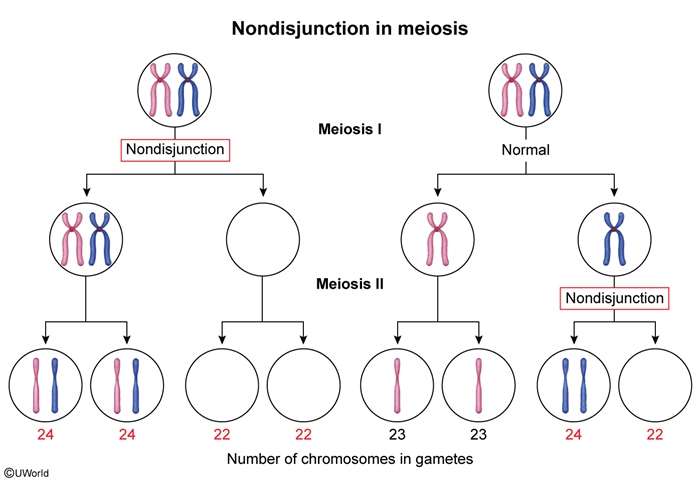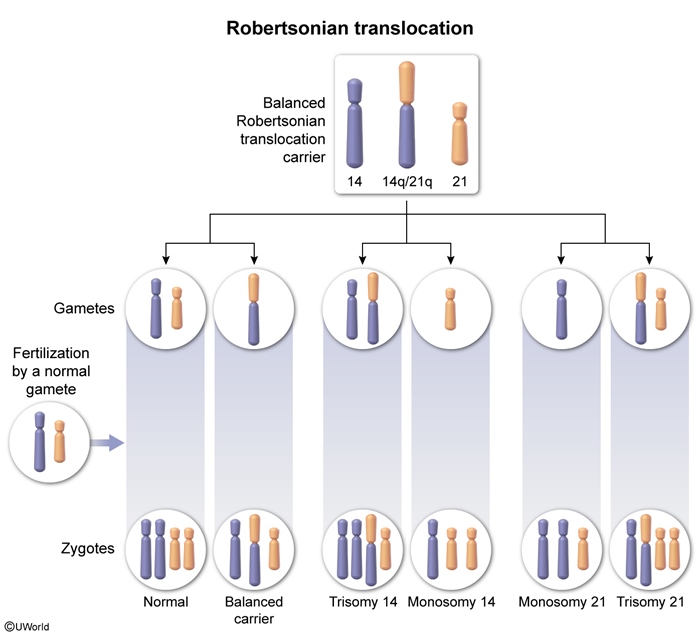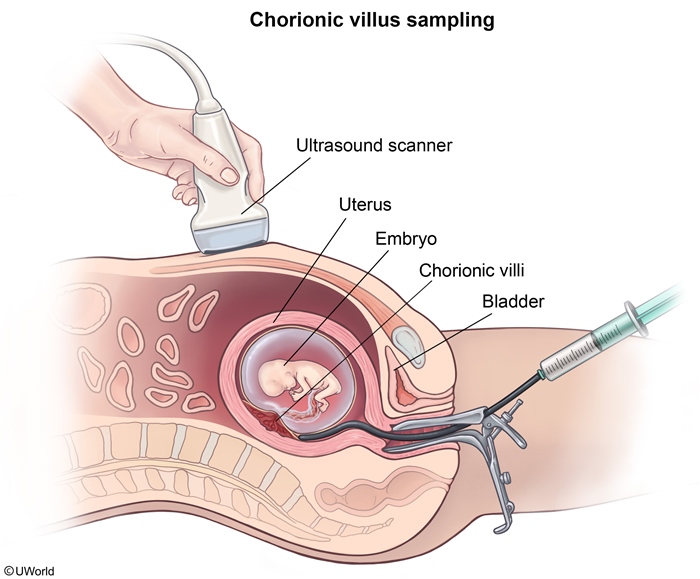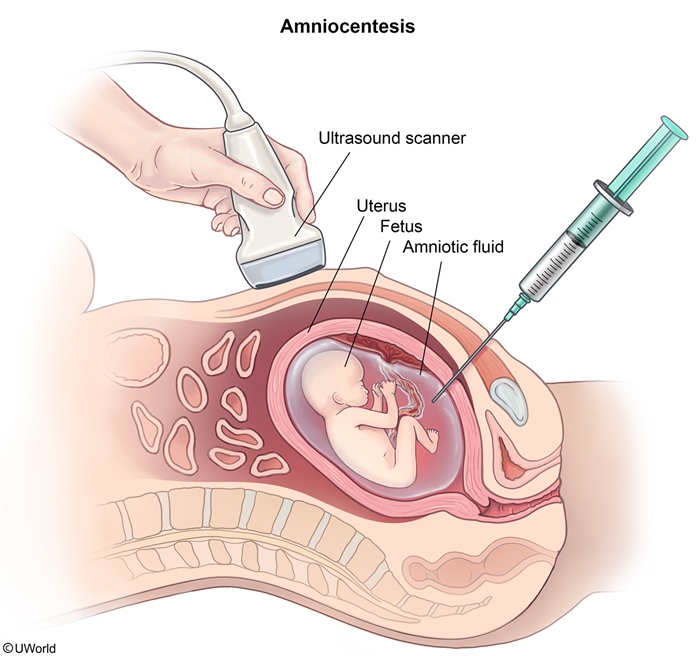Trisomy 21 (Down Syndrome)
Article Sections
Introduction
Trisomy 21 (Down syndrome) is characterized by the presence of 3 copies of chromosome 21. It is the most common trisomy, occurring in approximately 1 in 700 live births. Trisomy 21 is associated with a distinct phenotype and an increased risk for certain medical conditions.
Pathogenesis
Maternal meiotic nondisjunction is the most common cause of trisomy 21. In normal meiosis, the homologous chromosomes separate, resulting in 4 gametes with 1 copy of the chromosome in each gamete. However, in meiotic nondisjunction (Figure 1) the homologous chromosomes fail to separate, resulting in 4 gametes with 0, 1, or 2 copies of the chromosomes in each gamete. If the gamete with 2 copies of the chromosomes is fertilized by a gamete with 1 copy of the chromosome, then the resulting zygote has 3 copies of the chromosome, as occurs in 95% of cases of trisomy 21. Meiotic nondisjunction is a sporadic event that occurs during oogenesis.
Continue Learning with UWorld
Get the full Trisomy 21 (Down Syndrome) article plus rich visuals, real-world cases, and in-depth insights from medical experts, all available through the UWorld Medical Library.
Figures



